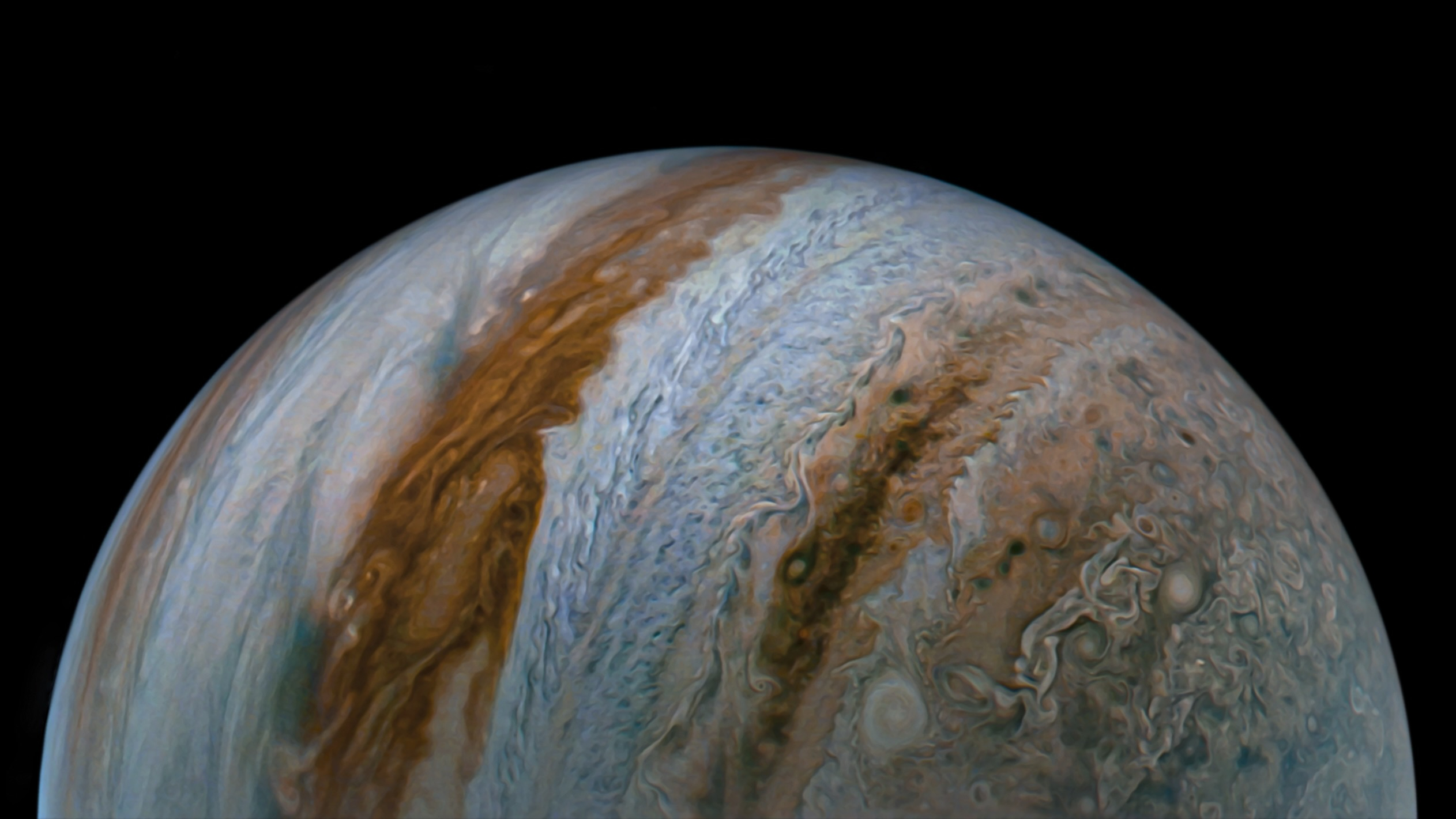Here Are the Most Spectacular Solar Eclipses in US History
Great American Total Solar Eclipses
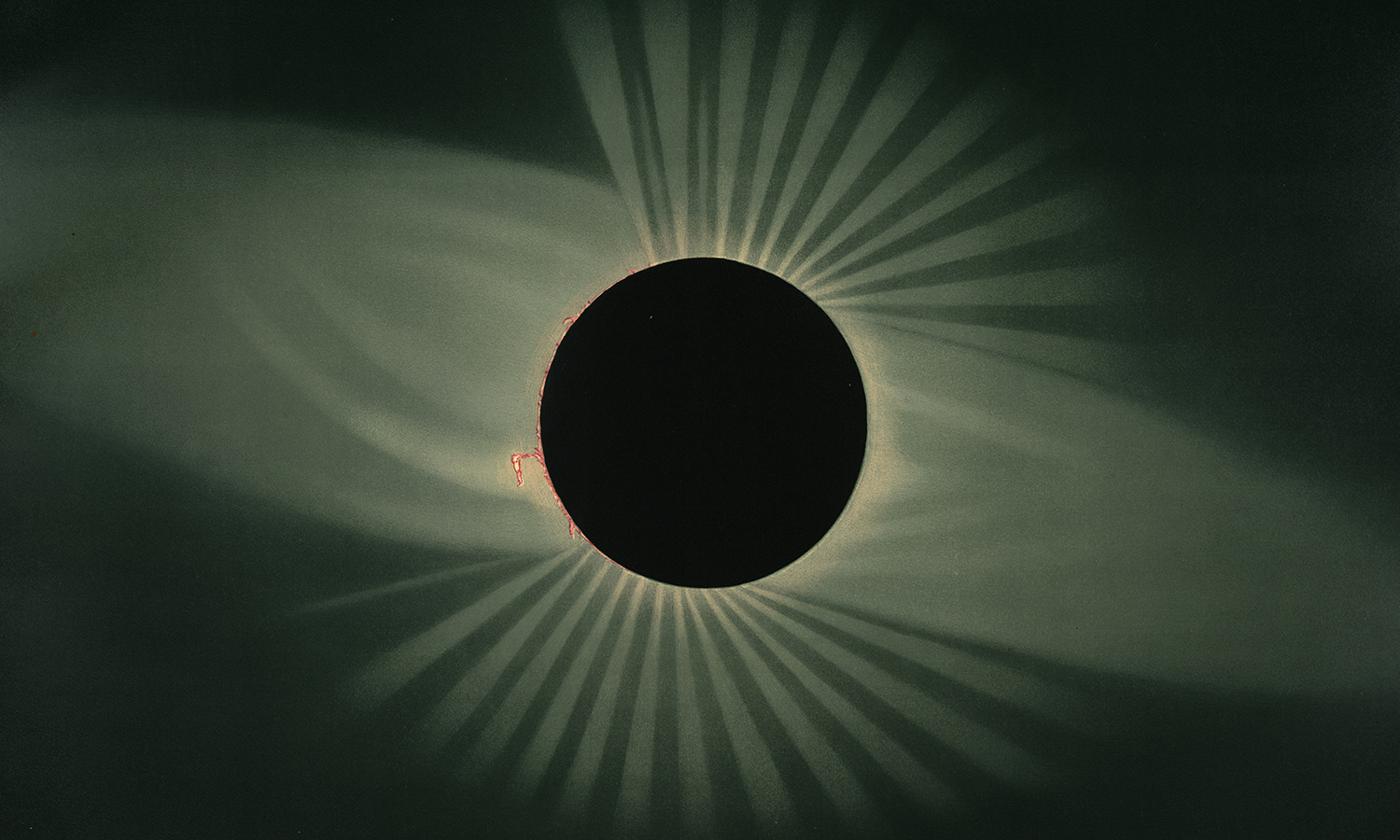
On Aug. 21, 2017, a total solar eclipse will cross the continental United States from coast to coast, in an event that's been dubbed the Great American Solar Eclipse.
While it is certainly rare for a total solar eclipse to be visible to such a large portion of the American population, it's not the first time it's happened in the country's history. There have been a handful of total solar eclipses that have crossed large swaths of the United States during its history. For example, the total solar eclipse of 1878 crossed a large portion of Alaska, and then went south and made a diagonal pass from the eastern tip of Washington state to the southwest corner of Louisiana. The book "American Eclipse," (Liveright, 2017) by David Baron, describes how this eclipse impacted the American astronomy community at the time.
Shown here is a painting of that eclipse by E. L. Trouvelot, an artist who did astronomical drawings for the Harvard College Observatory. Click forward to see a list of other great American solar eclipses.
1806: An eclipse for a young nation
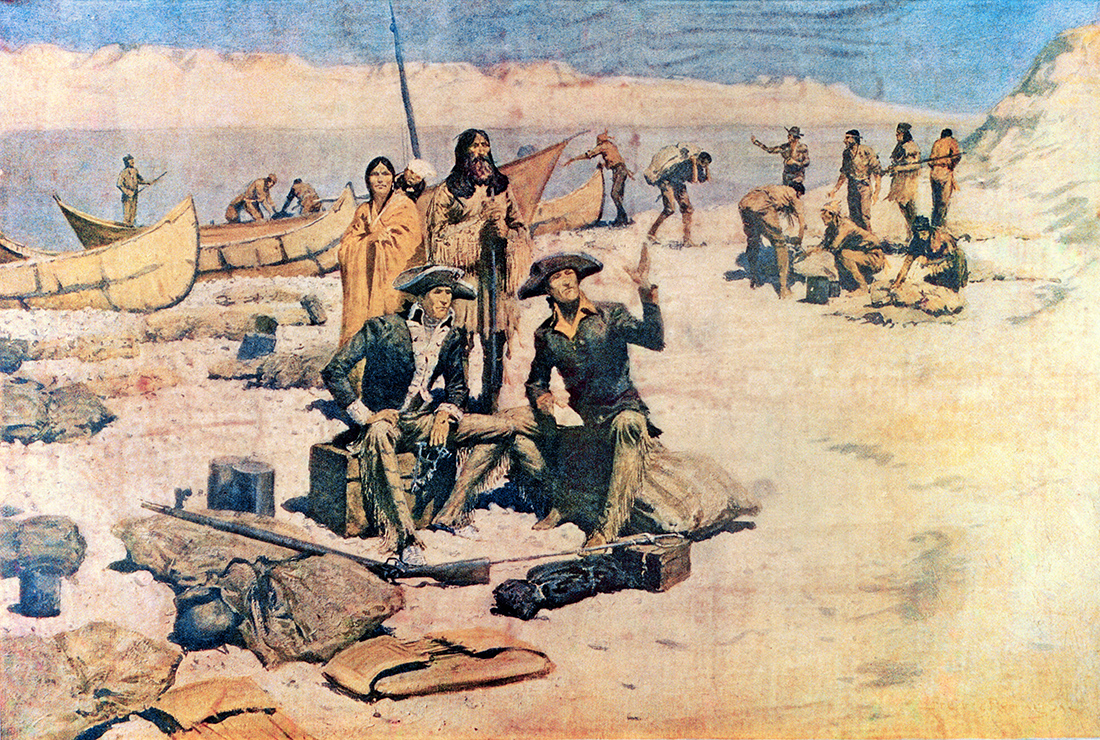
In 1806, American explorers Meriwether Lewis and William Clark were on their way home from their historic journey through the Pacific northwest. On June 16, the travelers would have witnessed a partial solar eclipse (when the moon covers only part of the sun) from their location. This painting by Frederic Remington depicts Lewis and Clark on the Columbia River. Behind them are Sacajawea, with her baby on her back, and her husband.
But other citizens of the U.S. and nearby territories would have witnessed a total solar eclipse (when the sun completely blocks the disk of the sun in the sky) that day. The eclipse went from what is now Arizona, up through the Midwest, and through southern New York state, northern Pennsylvania and lower New England, including Boston, one of the still-young nation's largest cities.
1834: Astronomical highlights
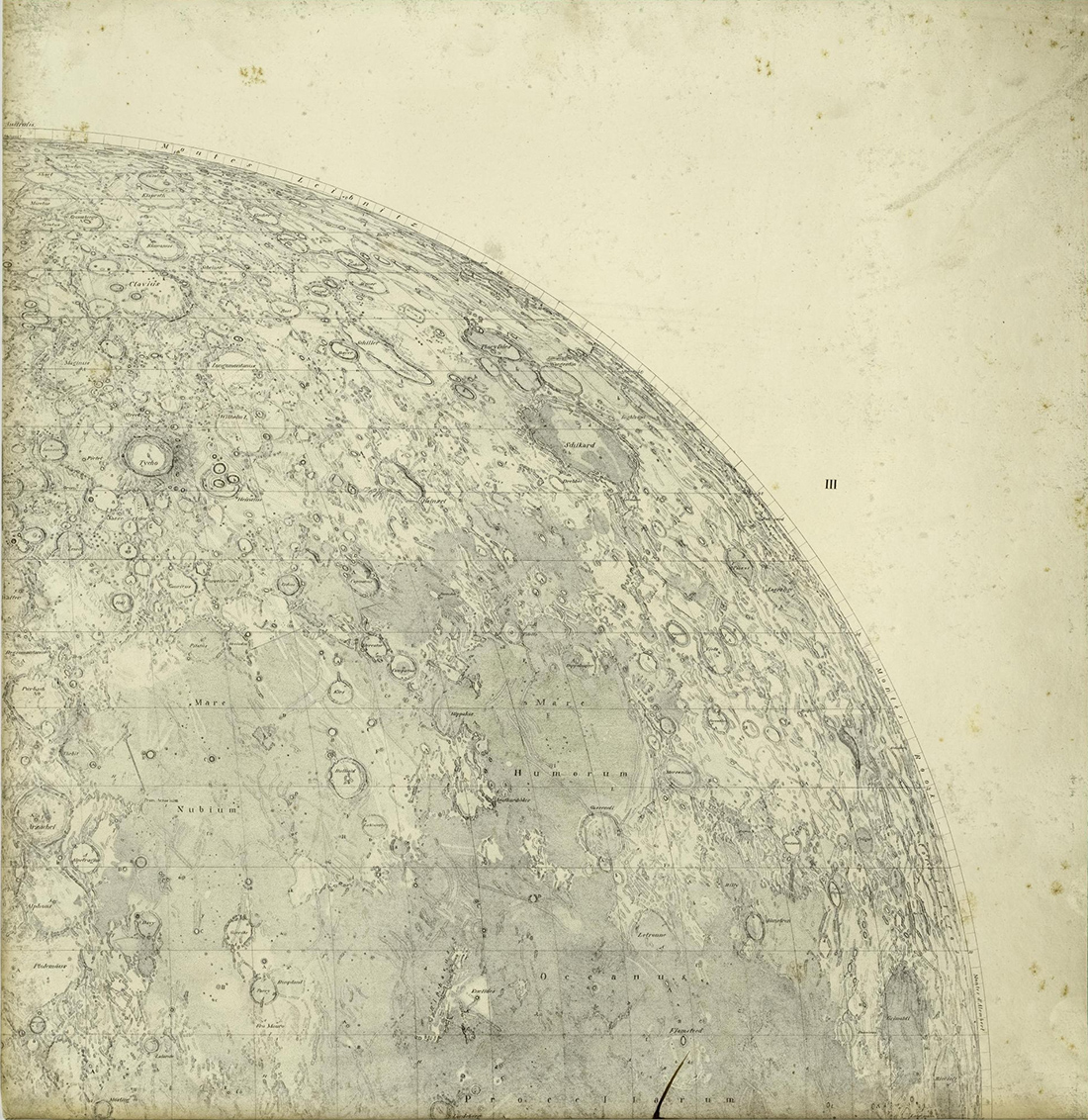
On Nov. 30, 1834, a total solar eclipse crossed the U.S. territories from Montana to South Carolina, swooping through parts of the American heartland and the South.
Another triumph for astronomy came that year, when Johann Heinrich von Mädler and Wilhelm Beer published Mappa Selenographica, which was the most complete map of the moon at that time. A portion of that moon map is shown here, and you can see that entire publication here.
1869: A photo finish
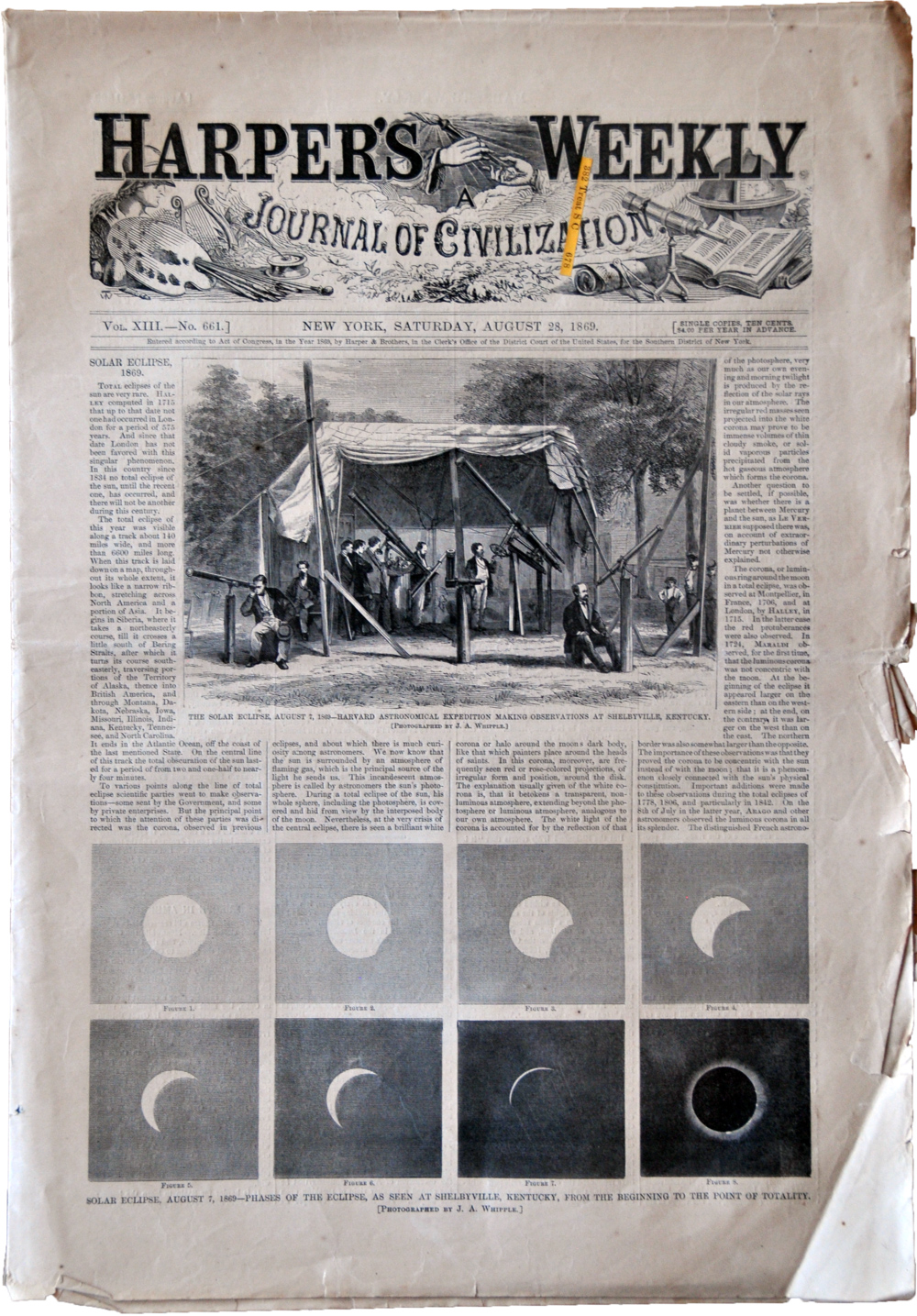
In 1869, Harper's Weekly published an article about the total solar eclipse that crossed the U.S. from Montana to North Carolina. This celestial event was visible from many Midwestern states.
The article in Harper's included photographs of the moon as it crept across the face of the sun, eventually blocking the entire solar disk, and revealing the white, spikey crown of the sun's atmosphere.
1918: Einstein's shining moment
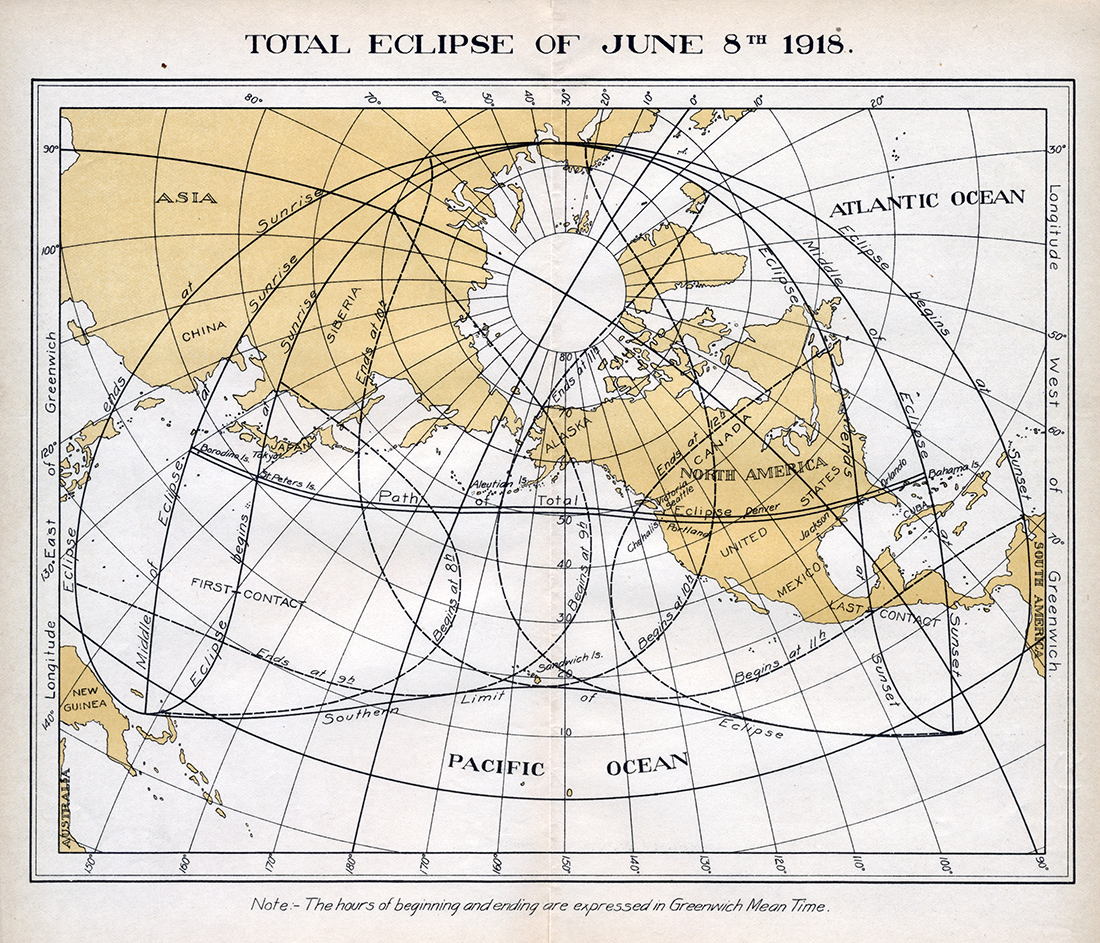
Following the eclipse of 1878, the next total solar eclipse that was visible from a large portion of the U.S. occurred in 1918. The dark shadow of the moon crossed the country from coast to coast, traveling from Washington state to Florida.
The eclipse was particularly significant for scientists. Observations of the eclipse were used to test Albert Einstein's theory of general relativity. The theory stood up to the experimental scrutiny, and "Einstein" soon became a household name.
This event, which occurred more than a century ago, was the most recent total solar eclipse to cross the continental U.S. from coast to coast. Be sure to catch the next one on Aug. 21, 2017!
Next: 2017's Great American Solar Eclipse
2017: Great American Solar Eclipse
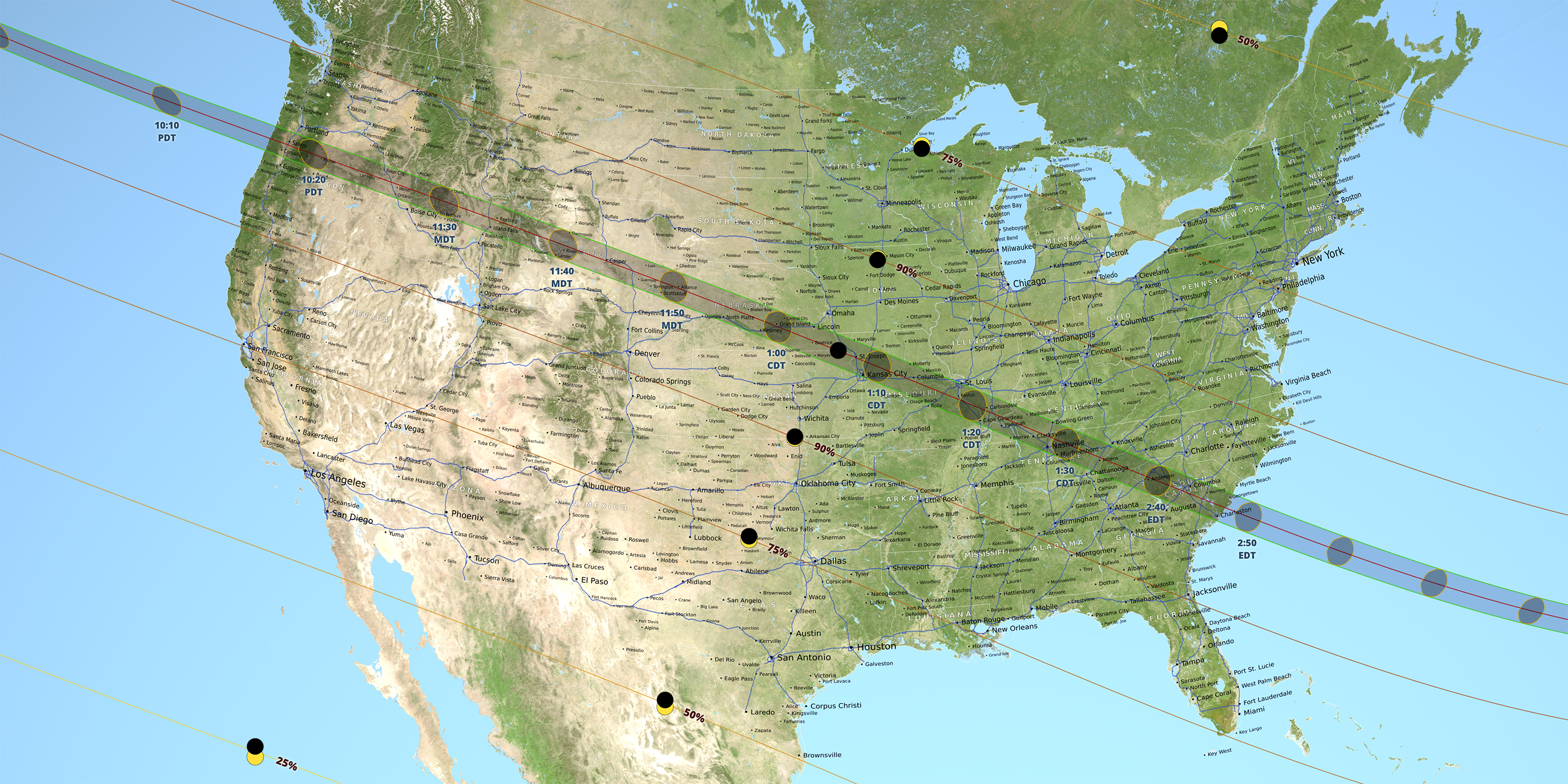
That brings us to 2017, where the total solar eclipse of Aug. 21 will cross the continental United States for the first time in 99 years. The event will likely be the most observed and most photographed solar eclipse in history as it will be visible across a long swath of the U.S. from Oregon to South Carolina. Millions of people live or can travel to an observing spot within the totality path, and it may be one for the record books!
So get ready for what promises to be an amazing eclipse experience and visit Space.com for complete coverage of the 2017 total solar eclipse! Follow Calla Cofield @callacofield. Follow us @Spacedotcom, Facebook and Google+.
Join our Space Forums to keep talking space on the latest missions, night sky and more! And if you have a news tip, correction or comment, let us know at: community@space.com.
Get the Space.com Newsletter
Breaking space news, the latest updates on rocket launches, skywatching events and more!

Calla Cofield joined Space.com's crew in October 2014. She enjoys writing about black holes, exploding stars, ripples in space-time, science in comic books, and all the mysteries of the cosmos. Prior to joining Space.com Calla worked as a freelance writer, with her work appearing in APS News, Symmetry magazine, Scientific American, Nature News, Physics World, and others. From 2010 to 2014 she was a producer for The Physics Central Podcast. Previously, Calla worked at the American Museum of Natural History in New York City (hands down the best office building ever) and SLAC National Accelerator Laboratory in California. Calla studied physics at the University of Massachusetts, Amherst and is originally from Sandy, Utah. In 2018, Calla left Space.com to join NASA's Jet Propulsion Laboratory media team where she oversees astronomy, physics, exoplanets and the Cold Atom Lab mission. She has been underground at three of the largest particle accelerators in the world and would really like to know what the heck dark matter is. Contact Calla via: E-Mail – Twitter
